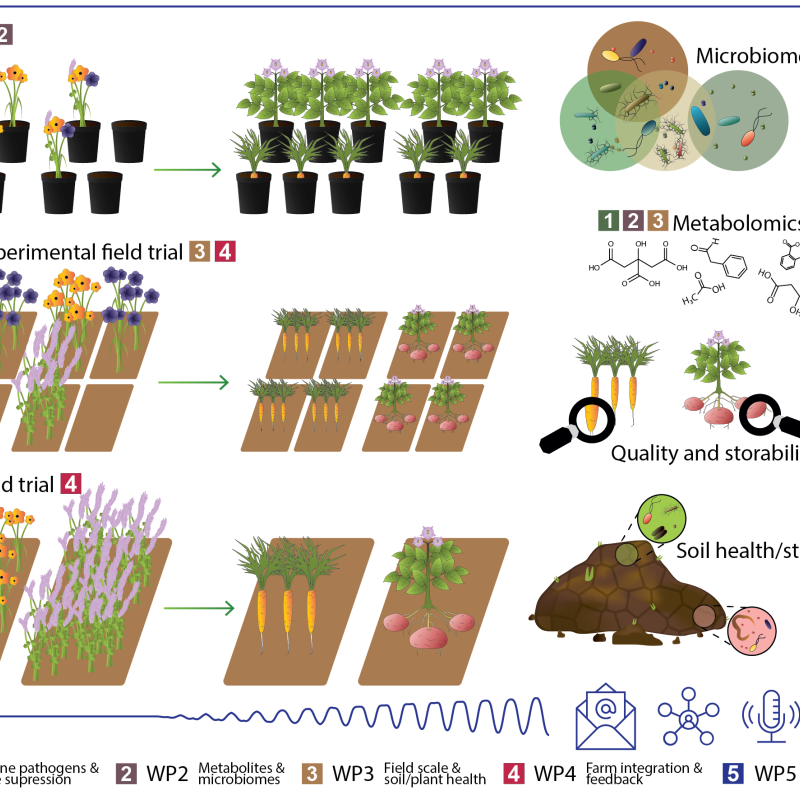Simeon Rossmann
Forsker
Biografi
Jeg forsker på forskjellige anvendte aspekter innenfor plantepatologi. Jeg har jobbet mye med Pectobacteriaceae, som forårsaker bløtråte og stengelråte i potet og ulike andre sykdommer i mange andre vertsplanter. Jeg er spesielt interessert i insekter assosiert med disse bakteriene og andre plantepatogene bakterier i feltet og molekylære mekanismene bak disse forskjellige assosiasjonene.
I det siste var jeg fokusert på praktiske og bioinformatiske implementeringer av metabarkoding eller amplikonsekvensering som et verktøy for deteksjon og identifisering av plantepatogene sopp, Oomycota, nematoder, bakterier, og invaderende plante- og insektarter.
Jeg fikk BSc og MSc fra University of Tübingen, hvor jeg oppdaget min lidenskap for plantepatologi ved Center for Plant Molecular Biology (ZMBP). I løpet av doktorgradsperioden min (2015-2018) undersøkte jeg bløtråte i norske potet med prof. May Bente Brurberg (NIBIO / NMBU) som hovedveileder.
Forfattere
Simeon Rossmann Paulina Paluchowska Zhimin Yin Erik Lysøe Mirella Ludwiczewska Marta Janiszewska S Sobkowiak Håvard Eikemo Monica Skogen Jadwiga Sliwka May Bente BrurbergSammendrag
Det er ikke registrert sammendrag
Forfattere
Nina Johansen Hans Geir Eiken Simeon Rossmann May Bente Brurberg Monica Skogen Marta Bosque Fajardo Borghild Glorvigen Toril Sagen Eklo Finn-Arne Haugen Snorre Hagen Erik LysøeSammendrag
Several aphid species pose serious treats to potato crops by causing direct damage to the plants and/or indirectly by transmitting viruses. Different morphological forms and phenotypic plasticity among aphids complicates taxonomy and identification and thus makes targeted pest management in potatoes challenging. To obtain an overview of aphids frequenting potato fields in Norway, we investigated seasonal and annual changes in aphid populations in five potato fields (58–64 °N) over a three-year period (2016–2018), using yellow pan traps. In total 2218 of the 6136 collected aphids were identified by traditional barcoding, meaning sequencing a ~ 650 fragment of the mitochondrial COI gene. This revealed 137 different species, of which 111 were identified at the species level. The remaining were identified only to the genus level, indicating potential novel species. The southernmost sampling location yielded the highest number of species and individual counts, although no clear correlations to climate factors (temperature/precipitation) was observed. Of the 111 species identified, at least 39 are potential vectors of potato virus Y (PVY) and nine species may also transmit potato virus A (PVA). Knowledge on virus vector and non-vector aphid abundance and phenology have the potential to improve pest management of potato cultivation.
Sammendrag
Det er ikke registrert sammendrag

